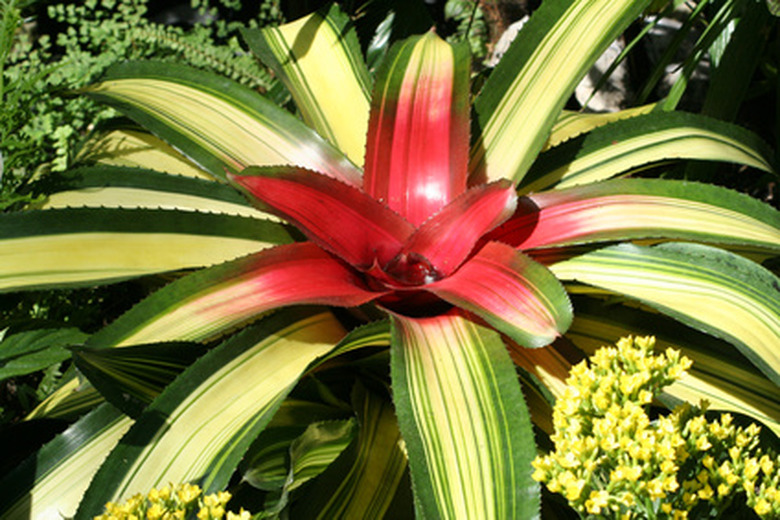What Do Plants Need To Carry Out Photosynthesis?
Photosynthesis is the process by which most plants make their own food. You might already be familiar with the basics of photosynthesis from watching houseplants grow. They at least need light and water, or else they will begin to wilt. But that's not all a plant needs for photosynthesis. In addition to the basic ingredients, the plant requires certain structures to make use of those ingredients, all so photosynthesis can happen.
What Do Plants Need in Order to Perform Photosynthesis?
What Do Plants Need in Order to Perform Photosynthesis?
Photosynthesis requires multiple ingredients and structures. Focusing on the big things first, a plant needs leaves and roots, and, crucially, they also need sunlight and water. The leaves are where photosynthesis actually happens, but the first ingredient in photosynthesis is water, and most plants wouldn't be able to get water without roots. Primitive plants, like mosses, get away without having extensive roots because they tend to live in wet places. However, a tree is going to need those larger root systems.
Once that water makes its way up to the leaf through the stem, it can be used for photosynthesis.
What Important Structures Are in the Leaf?
What Important Structures Are in the Leaf?
The leaf, like the rest of the plant, is made of cells. To oversimplify a little bit, a leaf is a bunch of cells wrapped in a waxy cuticle that protects them. It's sort of like the leaf is laminated. That cuticle has holes called stomata, which can open to let the next ingredient in. That next ingredient is a gas called carbon dioxide, or CO2.
The cuticle also helps gather the third and final ingredient, sunlight. Because the cuticle is transparent, it passively allows sunlight through the same way a glass window allows light into a room.
Because of the cuticle and roots, the leaf cells have access to all the ingredients they need to carry out photosynthesis.
Photosynthesis Requires Chloroplasts
Photosynthesis Requires Chloroplasts
Inside the cells that make up the bulk of the leaf are little structures called chloroplasts. The chloroplasts do most of the heavy lifting when it comes to photosynthesis, as they use the water that the roots drew up, along with the carbon dioxide and light that the cuticle and stomata let in.
The chloroplasts are like little membrane sacs filled with a watery liquid called stroma. Within the stroma, you can find structures called thylakoids. If you could look into a chloroplast, you would see that the thylakoids look like little green discs stacked one on top of the other, much like how coins from the bank are stacked in paper rolls. The thylakoids are green because they are chock full of chlorophyll, the pigment that sets off the process of photosynthesis.
What Does Chlorophyll Do?
What Does Chlorophyll Do?
Chlorophyll absorbs light. Specifically, when it is hit by a particle of light, called a photon, it transfers the energy from that photon to another particle called an electron. Because that excited electron goes away to continue photosynthesis outside of the chlorophyll, the chlorophyll molecule will need a new electron.
Here's where water comes in. When chlorophyll is down an electron, it becomes incredibly electronegative. In this context, all that means is that it becomes strong enough to rip apart a water molecule so it can steal an electron to replace the one it lost. This also pumps free hydrogen into the stroma and oxygen molecules out into the air around the leaf.
Those electrons and hydrogens all supply energy for the second part of photosynthesis, which happens in the stroma.
Photosynthesis Makes Sugars
Photosynthesis Makes Sugars
In the watery stroma are a bunch of proteins called enzymes. Their job is to grab molecules of carbon dioxide and use the energy harvested by the chloroplasts to build that carbon dioxide into sugars called glucose. Glucose is the end result of photosynthesis, and while it has a lot of uses, it is primarily food for the plant. Glucose is why plants need photosynthesis.
To review, the ingredients for photosynthesis are water, carbon dioxide **and light energy. These things are converted by photosynthesis into oxygen and glucose.** The plant gathers these ingredients using vital structures that help it transport those ingredients to other structures in the plant, where the photosynthesis takes place.
Cite This Article
MLA
Brennan, John. "What Do Plants Need To Carry Out Photosynthesis?" sciencing.com, https://www.sciencing.com/what-do-plants-need-to-carry-out-photosynthesis-12491676/. 30 September 2021.
APA
Brennan, John. (2021, September 30). What Do Plants Need To Carry Out Photosynthesis?. sciencing.com. Retrieved from https://www.sciencing.com/what-do-plants-need-to-carry-out-photosynthesis-12491676/
Chicago
Brennan, John. What Do Plants Need To Carry Out Photosynthesis? last modified March 24, 2022. https://www.sciencing.com/what-do-plants-need-to-carry-out-photosynthesis-12491676/
